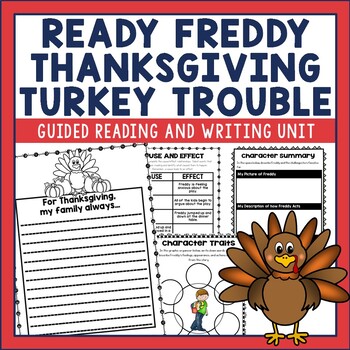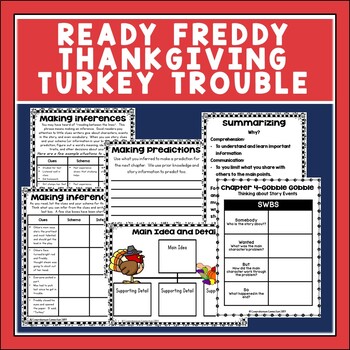Ready Freddy! Thanksgiving Turkey Trouble Novel Study
- PDF
Description
Ready Freddy Thanksgiving Turkey Trouble is just plain fun! Your transitional readers will be ready for Thanksgiving with a study of Ready Freddy or use the book as a read aloud to model skills for each chapter. The unit includes 34 instructional pages that can be printed or used on a smartboard. Each chapter has a focus skill to keep your students' reading skill focused.
WHAT'S INCLUDED IN THE READY FREDDY THANKSGIVING TURKEY TROUBLE UNIT?
- schema building about Thanksgiving
- tier 2 vocabulary for each chapter
- making connections
- cause and effect relationships
- summarizing
- elements of fiction (story map)
- questioning strategies
- sequencing
- making inferences
- character traits, and
- plot development.
Please be sure to look at the preview file included. Zoom in to see how the pages are organized. All but a few pages are included, and each chapter is organized in a before/during/after format.
HERE'S WHAT TEACHERS THOUGHT ABOUT THE READY FREDDY UNIT:
"Great resource for a novel study during book clubs."
"So helpful! Used this packet with my guided reading groups!"
"Great resource. Easy for my special education students to use and not to babyish so they felt it was below their level."
"Please do more with different books in this series! I love what you have!"
OTHER RESOURCES YOU MIGHT ENJOY:
- Thank You Mr. Falker by Patricia Polacco
- Two Bad Ants by Chris Van Allsburg
- Owl Moon by Jane Yolen
- Salt in His Shoes by Deloris and Roslyn Jordan
- My Rotten Redheaded Older Brother by Patricia Polacco
© 2019 Comprehension Connection by Carla Fedeler All rights reserved.





